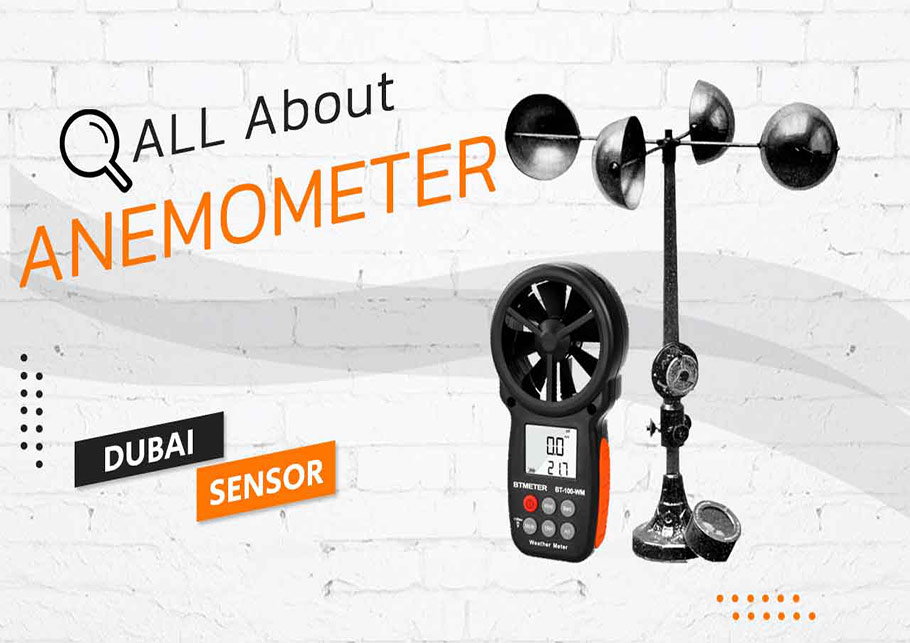Why an Anemometer is Necessary for Your Environmental Data Collection
Why an Anemometer is Necessary for Your Environmental Data Collection
Blog Article
All You Required to Find Out About Anemometers: Just How They Work, Why They Issue, and Where to Utilize Them
Anemometers, however usually forgotten in the world of scientific tools, play an essential function in different areas, supplying valuable understandings into wind speed and airflow patterns. Understanding the technicians behind these gadgets is essential for anybody seeking to harness the power of this information. From meteorologists tracking climate patterns to engineers designing structures with wind tons in mind, the applications of anemometers are significant and varied. As we look into the ins and outs of anemometer innovation, we will reveal the internal workings of these tools, their significance, and the key considerations when picking the ideal anemometer for certain applications.

Anemometer Basics
A necessary instrument used to gauge wind rate and instructions, the anemometer plays an important role in meteorology and various sectors. An anemometer normally is composed of three or 4 cups that revolve in the wind, a vane that directs right into the wind, and sensing units to track the movements or rotations. By computing the rotations or motions over a certain amount of time, the anemometer can establish wind speed. The vane assists establish wind direction by aiming into the wind, offering valuable information for weather condition projecting, aeronautics, maritime procedures, ecological monitoring, and wind energy applications.
There are numerous kinds of anemometers offered, including mug anemometers, vane anemometers, hot-wire anemometers, and sonic anemometers, each with its special features and applications. Mug anemometers are commonly made use of for fundamental wind speed measurements, while vane anemometers are preferred for directional measurements. Hot-wire anemometers are suitable for reduced airspeeds, and sonic anemometers are ideal for high-precision dimensions in research and industrial settings. Comprehending the basics of anemometers is essential for precise wind information collection and analysis throughout various fields.
Principles of Anemometer Procedure
Structure on the fundamental understanding of anemometer basics, the principles of anemometer operation elucidate the auto mechanics behind wind rate and direction dimensions. Anemometers run on the principle of air movement impacting a sensing unit, triggering it to revolve. Cup anemometers, as an example, have 3 or even more cups that catch the wind, triggering them to rotate much faster as the wind rate increases. The rotation rate is after that transformed into a wind speed measurement. Vane anemometers, on the various other hand, make use of news a tail or a probe that aligns itself with the wind instructions, supplying a dimension of wind direction based upon the alignment of the sensor. Hot-wire anemometers count on a heated wire that cools off as wind overlooks it, with the price of cooling figuring out the wind speed. Ultrasonic anemometers step wind rate and instructions by evaluating the moment it takes for ultrasonic signals to take a trip in between transducers. Understanding these principles is critical for reliable and accurate wind measurements in various applications.
Significance of Anemometers
Anemometers play a crucial function in gauging wind rate and direction, providing crucial information for weather condition forecasting, environment research studies, environmental surveillance, and air travel operations. Meteorologists count on anemometers to gather accurate wind information, helping them recognize weather patterns, forecast tornados, and problem timely warnings to the public. Wind ranch drivers use anemometers to assess wind conditions and make the most of electricity production from wind turbines.
Applications Across Different Industries
In the renewable power field, anemometers play an important duty in evaluating wind conditions for wind farm positionings, ensuring optimal power manufacturing. Industries like construction and mining use anemometers to keep an eye on wind rates, critical for security methods, specifically my link when working at heights or in open-pit mines where solid winds can posture threats. In agriculture, anemometers help farmers in managing plant spraying by giving real-time information on wind rate to stay clear of drift.

Selecting the Right Anemometer for Your Needs
For basic functions, a cup anemometer is appropriate for gauging wind speed, while a vane anemometer offers wind direction data. Hot-wire anemometers are ideal for low airspeed measurements, and ultrasonic anemometers offer high precision and resilience.

Final Thought
In verdict, anemometers play a vital function in determining wind speed and direction throughout various industries. Understanding the concepts of anemometer procedure is vital for choosing the best tool for specific requirements. From weather forecasting to aeronautics, anemometers are crucial tools for collecting exact data and guaranteeing safety and security in different applications. It is very important to think about the value of anemometers in order to make educated decisions when choosing one of the most appropriate tool for determining my blog wind conditions.
There are different kinds of anemometers readily available, consisting of cup anemometers, vane anemometers, hot-wire anemometers, and sonic anemometers, each with its unique attributes and applications. Cup anemometers are typically made use of for basic wind rate dimensions, while vane anemometers are liked for directional dimensions. Hot-wire anemometers are suitable for low airspeeds, and sonic anemometers are optimal for high-precision dimensions in research study and industrial settings.Building on the foundational understanding of anemometer fundamentals, the concepts of anemometer procedure illuminate the mechanics behind wind speed and direction measurements. For general functions, a cup anemometer is ideal for measuring wind speed, while a vane anemometer supplies wind instructions information.
Report this page